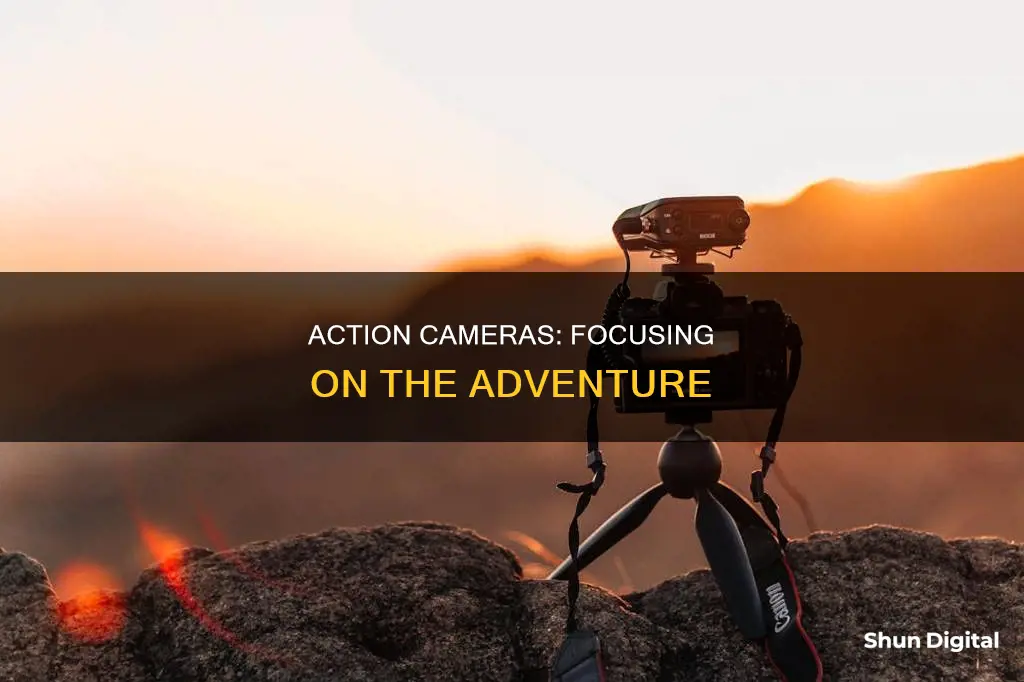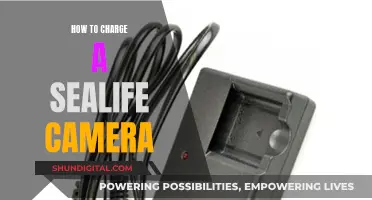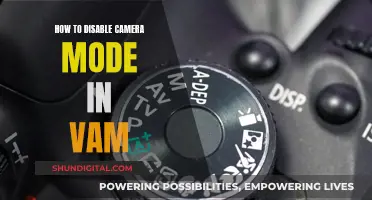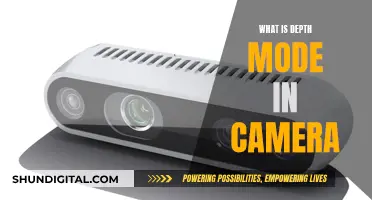
Action cameras are small, rugged devices that can capture high-quality images and videos in various environments and conditions. They are commonly used for outdoor sports, extreme activities, and fast-paced events. One of the key features that enable action cameras to capture sharp and clear images is their autofocus system.
Autofocus technology in action cameras ensures that the camera can quickly and accurately adjust its focus, allowing users to capture clear and focused footage, even in challenging environments. The autofocus system plays a crucial role in producing high-resolution images and smooth videos by automatically adjusting the camera lens to focus on the subject.
There are two main types of autofocus technology used in action cameras: contrast detection autofocus (CDAF) and phase detection autofocus (PDAF). CDAF works by analysing the contrast between different areas of the image, while PDAF splits the incoming light into two separate images and compares the phase difference to determine the focus distance.
In recent years, advancements in autofocus technology have led to the introduction of hybrid autofocus systems that combine both CDAF and PDAF, offering even faster and more accurate performance. Additionally, action cameras may also have manual focus options, providing users with more control over their footage and allowing for precise adjustments.
Overall, the autofocus system in action cameras is a crucial component that enables these devices to capture high-quality images and videos, making them a popular choice for photographers and videographers who need a reliable and versatile camera for various shooting scenarios.
What You'll Learn

Fixed focus system
Action cameras typically use a fixed focus system, which means they have a fixed focal length and cannot manually adjust the focus. This type of focus system is designed to capture a wide field of view and ensure that objects within a certain distance are in focus. The focus is usually set to a specific distance, often referred to as "infinity focus". This means that objects beyond a certain distance will be in focus, making it ideal for capturing fast-paced action and wide-angle shots with a deep depth of field.
Fixed-focus cameras have a predetermined focus point set by the manufacturer. They lack the ability to adjust the focus manually or automatically, so every image taken will be focused at a specific distance from the lens. This simplicity makes fixed-focus cameras ideal for beginners or casual photographers who value convenience and ease of use over advanced features. Fixed-focus cameras are commonly found in simple point-and-shoot cameras, disposable cameras, and some older film cameras.
One of the main advantages of a fixed focus system is its simplicity. With no focusing mechanism to worry about, users can simply point and shoot without adjusting any settings. This makes fixed focus cameras user-friendly and accessible, especially for those who are new to photography or prefer a straightforward approach.
However, the limitation of a fixed focus system becomes apparent when dealing with subjects at varying distances. Since the focus is locked at a specific distance, objects closer or farther away may appear blurry or out of focus. This restricts the versatility of fixed-focus cameras, making them less suitable for capturing scenes with depth or when precise focus control is required.
Despite this limitation, fixed focus systems have their advantages, particularly in specific use cases. For example, fixed focus cameras are well-suited for fast-paced action photography, where there is little time to adjust settings manually. The wide depth of field provided by a fixed focus system ensures that most objects within a certain range are in focus, making it suitable for capturing dynamic scenes.
Additionally, fixed focus cameras often have a compact and rugged design, making them durable and portable. They are commonly used in outdoor sports and extreme activities due to their ability to withstand harsh conditions. Protective casings make them shockproof, dustproof, and temperature resistant, ensuring they can endure challenging environments.
In summary, a fixed focus system in action cameras offers a straightforward approach to photography. While it may lack the versatility of adjustable focus, it excels in convenience and ease of use. This type of focus system is ideal for capturing fast-paced action shots, wide-angle scenes, and situations where quick deployment is necessary.
License Plate Cameras: Can They Issue Tickets?
You may want to see also

Autofocus technology
There are two main types of autofocus systems: active and passive. Active autofocus systems measure the distance to the subject independently of the optical system, using methods such as ultrasonic sound waves or infrared light. Passive autofocus systems, on the other hand, perform an analysis of the image entering the optical system and do not direct any energy towards the subject.
Passive autofocusing can be achieved through phase detection or contrast measurement. Phase detection involves dividing the incoming light into pairs of images and comparing them to determine the focus distance. Contrast measurement, as the name suggests, measures the contrast within a sensor field through the lens, adjusting the focus until maximal contrast is achieved. While phase detection is generally faster and more suitable for action cameras, contrast measurement is highly accurate and can be used in conjunction with phase detection to enhance autofocus performance.
In recent years, hybrid autofocus systems have been developed, combining both active and passive methods or phase detection and contrast measurement. This allows for even faster and more accurate autofocus performance, as well as improved reliability.
Another important aspect of autofocus technology in action cameras is tracking autofocus. This feature enables the camera to continuously track and maintain focus on a moving subject, making it ideal for capturing fast-moving action shots. The camera achieves this by using advanced algorithms and artificial intelligence to analyse the movement patterns of the subject and predict its trajectory.
Overall, the advancements in autofocus technology have greatly improved the capabilities of action cameras, providing users with sharper and more focused images, even in challenging environments.
Samsung Cameras: Can You Capture Images in RAW?
You may want to see also

Manual focus options
Manual focus allows users to adjust the focus distance, ensuring that specific objects or subjects are in sharp focus. This is particularly useful when capturing objects at varying distances or when a specific depth of field effect is desired. The latest action cameras with manual focus options provide a range of focus distances selectable through the camera's menu or physical controls. Some cameras offer focus peaking, highlighting in-focus areas on the LCD screen or viewfinder for easier determination of the correct focus distance.
To enable manual focus, users can typically find a switch on the lens barrel labelled "AF/MF," allowing them to toggle between autofocus and manual focus. Additionally, some cameras have a switch or menu option on the camera body itself to switch between autofocus modes and manual focus.
Manual focus is especially beneficial in low-light conditions, such as astrophotography or night-time photography, where autofocus systems may struggle. It is also useful when shooting through glass, such as at a zoo, or when capturing distant horizons obscured by mist. Macro photographers often prefer manual focus to ensure precise focus for close-up images.
In addition to the benefits mentioned above, manual focus is ideal for scenarios where autofocus struggles, such as choosing between two dominant subjects or focusing through foreground elements. It is also valuable for macro and close-up photography, low-light situations, shallow depth of field scenarios, street photography, wide-angle photography, panorama photography, hyperfocal distance photography, and low-contrast situations.
Charging the Wyze Outdoor Camera: A Step-by-Step Guide
You may want to see also

Continuous autofocus
Different camera manufacturers have different names for this mode. Canon calls it AI Servo AF, Sony calls it Continuous AF, and Nikon refers to it as AF-C. Similarly, different cameras indicate when the focus is achieved in different ways. For example, the autofocus point on Canon cameras will turn blue once the subject is in focus.
Another important aspect of continuous autofocus is its predictive nature. Camera manufacturers have programmed their continuous autofocus modes to predict where the subject is moving. In other words, the camera tries to calculate where the subject will be when the shutter is released. It does this by continuously measuring the distance between the camera and the subject and factoring in previously received results. Based on this data, the camera's algorithm calculates the direction and speed of the subject and anticipates its movement. This helps to reduce significant errors and counter "shutter lag"—the brief time it takes for the shutter to open after the button is pressed.
While continuous autofocus is excellent for tracking moving subjects, it has its limitations. For example, it may be able to predict the movement of a car or a walking person, but tracking a bird or a cheetah running at high speeds and changing directions abruptly is more challenging. To address these limitations, camera manufacturers have developed variations of continuous autofocus modes, such as Animal Eye AF, Vehicle AF, and Deep Learning AF. Additionally, more advanced cameras allow users to customise how the continuous autofocus behaves in certain situations.
Toy Camera Mode: Creative Photography with a Vintage Twist
You may want to see also

Active vs. passive autofocus
There are two types of autofocus (AF) systems: Active AF and Passive AF. Each system has its advantages and disadvantages, and they work in different ways to achieve focus. Here is a detailed comparison between the two:
Active AF
- The active AF system operates by projecting a red beam of light onto the subject and then calculating the distance to the subject by analysing the reflected light.
- It is effective in low-light environments where passive AF struggles.
- However, it only works with stationary subjects and has a limited effective range.
- Active AF is typically found in speedlights or flash units and is suitable for close-up shots.
Passive AF
- Passive AF does not rely on emitting a light beam to determine distance. Instead, it uses "Phase Detection" or "Contrast Detection" techniques, or a combination of both.
- "Phase Detection" splits the incoming light into two images and measures the distance between them to calculate the focus adjustments needed. This method is very fast and ideal for tracking fast-moving subjects.
- "Contrast Detection" uses software algorithms to analyse the image for edge detail and adjusts focus until the subject is sharp. This method is generally slower but can be more accurate in low-light conditions.
- Passive AF is commonly found in modern DSLR and mirrorless cameras, which often feature both "Phase Detection" and "Contrast Detection" systems, allowing them to adapt to different environments.
Comparison
- Active AF is generally less accurate than Passive AF, especially at longer distances, as it is limited by the power of the emitted light beam.
- Active AF struggles with objects behind glass or transparent surfaces, whereas Passive AF can work through glass without issues.
- Passive AF may struggle in low-contrast or low-light conditions where there is insufficient detail for analysis.
- Active AF is better suited for stationary subjects, while Passive AF excels at tracking moving subjects.
In summary, both Active and Passive AF systems have their strengths and weaknesses. The choice between the two depends on the specific requirements of the photography scenario, with modern cameras often utilising a combination of both methods to achieve fast and accurate autofocus performance.
Fight Speeding Tickets: DC Camera Evidence and Your Defense
You may want to see also
Frequently asked questions
An action camera is a small, rugged device that people can carry to capture high-quality images and videos during physical activities, sports, and adventures.
Action cameras typically use autofocus technology, such as contrast detection autofocus (CDAF) or phase detection autofocus (PDAF), to ensure sharp and clear images. They may also offer manual focus options for precise adjustments.
CDAF works by analyzing the contrast between different areas of the image, while PDAF splits the incoming light into two separate images and compares the phase difference to determine the focus distance. PDAF is generally faster and more suitable for action cameras.
Action cameras are designed to be durable and portable, allowing users to capture smooth footage and high-resolution images in various environments and conditions. They often feature waterproofing, image stabilization, and mounting accessories for versatile use.
Some action cameras offer limited manual focus adjustments through software or settings. However, many action cameras use a fixed focus system with a specific "infinity focus" distance, ensuring that objects within a certain range are in focus.







